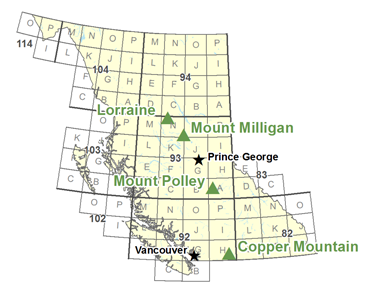Summary

Geoscience BC Report 2011-17 demonstrated the unique physical and chemical characteristics of porphyry indicator minerals (PIMS), particularly apatite, in alkalic and calc-alkalic porphyry deposits in BC, and suggested potential applications of other resistate minerals such as garnet, magnetite, titanite and diopside. Following on that work, this project studied those resistate minerals that are directly associated with alkalic porphyry deposits in order to establish specific criteria for their use in exploration of concealed deposits in BC.
PIMS are chemically stable in weathered environments, heavy, sufficiently coarse-grained and display characteristic features that can directly link them to a porphyry related alteration assemblage. These minerals commonly display unique physical properties such as colour, size and shape that allow their presence to be used as a prospecting tool in a similar manner to which kimberlite indicator minerals (KIMS) are used. Moreover, the chemical compositions of PIMS can identify mineralizing environments that relate directly to specific alteration zones in porphyry systems. Although easy to collect in heavy mineral concentrates, these minerals have rarely been used as exploration tools. Therefore, by evaluating the presence, abundances, relative proportions, and compositions of PIMS from surficial materials, it is possible to follow-up geophysical and geochemical anomalies to vector towards concealed porphyry copper deposits in the highly prospective Quesnel and Stikine terranes in central BC.
The purpose of this project was to identify the occurrence, types, relative amounts and compositions of selected PIMS in BC alkalic porphyry deposits in order to elucidate important PIMS signatures. Therefore, PIMS from Copper Mountain, Mt. Polley, and Mt. Milligan were characterized in order to evaluate their signatures in proximal tills, stream sediments, and heavy mineral concentrates.
Geoscience BC co-hosted an online webinar with MDRU – Mineral Deposit Research Unit on October 21, 2020 to discuss a series of research projects that show the potential to identify buried porphyry deposits from till or bedrock samples near the surface in British Columbia.